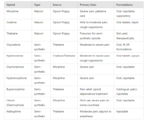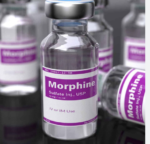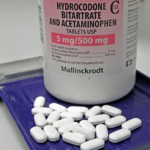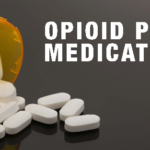Hydrocodone overdose is a life-threatening condition that requires immediate medical intervention. The risk of overdose is particularly high when hydrocodone is combined with other substances like alcohol, benzodiazepines, or other sedatives, all of which enhance its depressant effects.
Signs of Overdose:
- Extreme drowsiness or unresponsiveness
- Slow or shallow breathing
- Pinpoint pupils
- Cold, clammy skin
- Blue-tinted lips or fingernails
- Slow heart rate
- Loss of consciousness
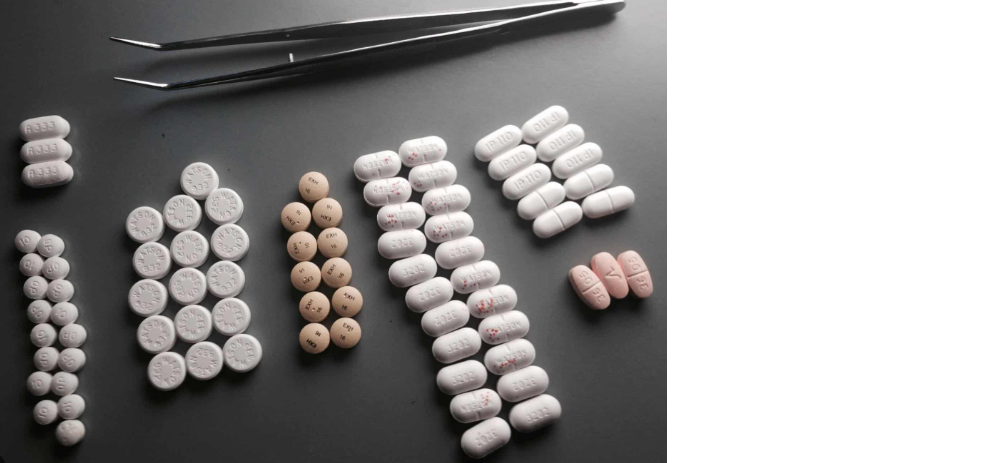
A hydrocodone overdose occurs when a person takes more hydrocodone than the body can safely process, leading to life-threatening consequences. Hydrocodone is a prescription opioid used to relieve moderate to severe pain, but it can be highly addictive and dangerous when misused. Overdose is particularly dangerous because hydrocodone depresses the central nervous system, which can slow or stop breathing, resulting in coma or death if not treated promptly.
1. Causes of Hydrocodone Overdose
An overdose can happen unintentionally or intentionally, and it often results from taking more than the prescribed dose or using hydrocodone in a way that is not intended (e.g., crushing and snorting pills). Several factors increase the risk of overdose:
Common Causes:
- Taking too much hydrocodone, either accidentally or intentionally.
- Mixing hydrocodone with other depressants, such as alcohol, benzodiazepines (e.g., Xanax, Valium), or other opioids. These substances can amplify the sedative effects of hydrocodone, leading to dangerous respiratory depression.
- Crushing, snorting, or injecting hydrocodone to get a more intense effect, which increases the risk of overdose.
- Low tolerance: After a period of not using opioids, such as after detox or rehab, a person may have a reduced tolerance. Taking the same dose as before can lead to overdose.
- Chronic use: Prolonged use can lead to tolerance, causing individuals to take higher and higher doses to achieve the same effects, increasing the risk of overdose.
2. Signs and Symptoms of Hydrocodone Overdose
Recognizing the signs of a hydrocodone overdose early is crucial for saving a life. Overdose symptoms typically reflect the drug’s central nervous system depressant effects.
Symptoms of Hydrocodone Overdose:
- Extreme drowsiness or inability to stay awake
- Slow, shallow, or stopped breathing (respiratory depression)
- Pinpoint pupils
- Cold, clammy skin
- Bluish or purplish lips, nails, or skin (cyanosis), indicating a lack of oxygen
- Weak pulse or low blood pressure
- Loss of consciousness or inability to respond
- Coma
In the most severe cases, respiratory depression can cause oxygen levels to drop so low that it leads to brain damage, coma, or death.
3. Hydrocodone Overdose Treatment
Immediate medical intervention is essential in the event of a hydrocodone overdose. Treatment focuses on reversing the effects of the drug, restoring normal breathing, and stabilizing the patient.
Steps to Take in the Event of an Overdose:
- Call Emergency Services (911):
- If you suspect someone is overdosing on hydrocodone, call emergency services immediately.
- Provide as much information as possible, including the type and amount of drug taken, the person’s symptoms, and their medical history, if known.
- Administer Naloxone (Narcan):
- Naloxone is a life-saving opioid antagonist that can rapidly reverse the effects of opioid overdose by blocking opioid receptors in the brain. It restores normal breathing within minutes.
- Naloxone is available in nasal spray or injectable forms and can be administered by bystanders or emergency personnel.
- Multiple doses may be required depending on the amount of hydrocodone taken.
- Naloxone works temporarily, and medical assistance is still necessary, as the effects of naloxone can wear off before the opioid is completely out of the system.
- Support Breathing:
- If the person is not breathing or their breathing is very slow, rescue breathing or CPR may be necessary until emergency help arrives.
- Lay the person on their side in the recovery position if they are unconscious but still breathing. This helps prevent choking if vomiting occurs.
- Emergency Medical Care:
- Upon arrival, emergency medical personnel will continue administering oxygen and naloxone if necessary.
- The patient may be placed on a ventilator if breathing is severely impaired.
- Medical staff will monitor vital signs, provide intravenous fluids, and treat any complications (such as low blood pressure or slow heart rate).
4. Post-Overdose Care and Recovery
After surviving a hydrocodone overdose, follow-up care is crucial to address the underlying issues that led to the overdose. This includes both medical stabilization and substance abuse treatment to prevent future overdoses.
Post-Overdose Care:
- Observation: Patients who have overdosed on hydrocodone are typically observed in the hospital for a period to ensure they do not experience rebound respiratory depression after the naloxone wears off.
- Tapering: If the person is dependent on hydrocodone, their doctor may recommend gradually reducing the dose to avoid withdrawal symptoms.
- Screening for Complications: Brain damage, aspiration pneumonia, and other complications are potential risks after an overdose and will need to be evaluated and treated as necessary.
Substance Abuse Treatment:
- Detoxification: Detox may be necessary for individuals who are dependent on hydrocodone. Medical detox helps manage withdrawal symptoms and safely taper off the drug.
- Medication-Assisted Treatment (MAT): After detox, MAT can help manage cravings and reduce the risk of future overdose. Common medications include:
- Buprenorphine (Subutex, Suboxone) or Methadone to reduce cravings and manage withdrawal symptoms.
- Naltrexone to block the euphoric effects of opioids and reduce the risk of relapse.
- Behavioral Therapies: Cognitive-behavioral therapy (CBT), contingency management, and motivational interviewing can help individuals understand the root causes of their addiction, develop healthy coping mechanisms, and avoid relapse.
- Inpatient or Outpatient Rehab: Depending on the severity of the addiction, individuals may benefit from an inpatient or outpatient rehab program. These programs offer a combination of therapy, support groups, and medical care.
- Support Groups: Peer support programs like Narcotics Anonymous (NA) or SMART Recovery provide a supportive community for individuals in recovery.
5. Prevention of Future Overdoses
Preventing future overdoses is a critical goal in treating hydrocodone abuse. Strategies to reduce the risk of overdose include:
Prevention Strategies:
- Avoid Mixing Substances: Never mix hydrocodone with alcohol, benzodiazepines, or other depressants. This combination significantly increases the risk of respiratory depression and overdose.
- Take Medications as Prescribed: Follow your doctor’s instructions carefully, and never take more hydrocodone than prescribed.
- Medication-Assisted Treatment (MAT): MAT can help reduce cravings and prevent relapse, significantly lowering the risk of overdose.
- Naloxone Availability: Carry naloxone if you or someone you know is at risk of opioid overdose. Educate friends and family on how to use naloxone in an emergency.
- Education on Tolerance: If you’ve been through detox or rehab and have lowered your opioid tolerance, be aware that returning to previous high doses can lead to overdose. Always use caution when resuming opioid medications.
- Counseling and Therapy: Engage in regular therapy sessions to address any underlying emotional or mental health issues that contribute to substance use.
Pain Medications, Pain Relief, and Pain Management
